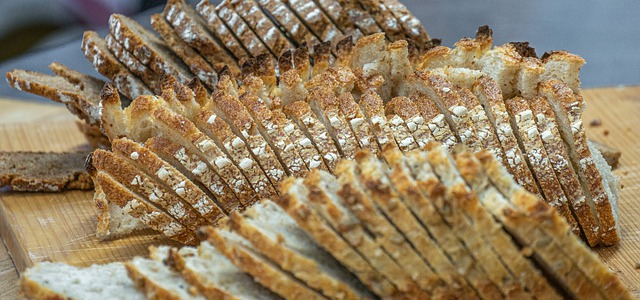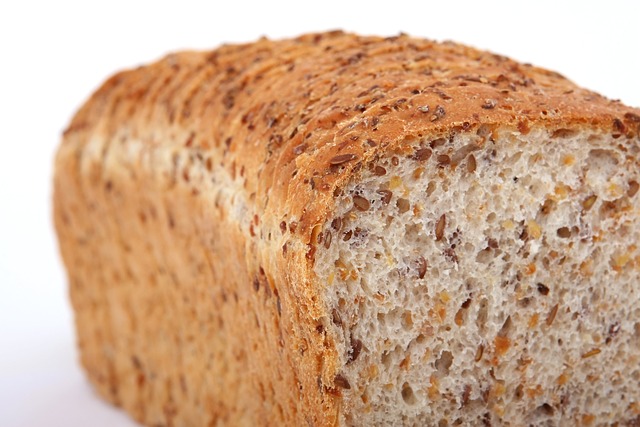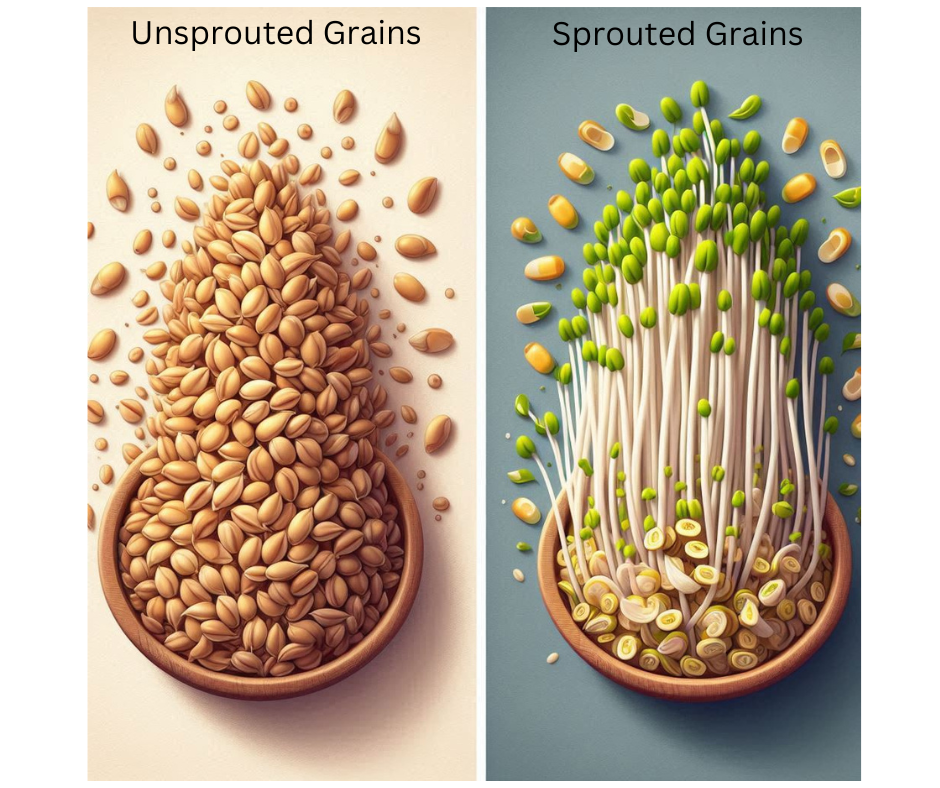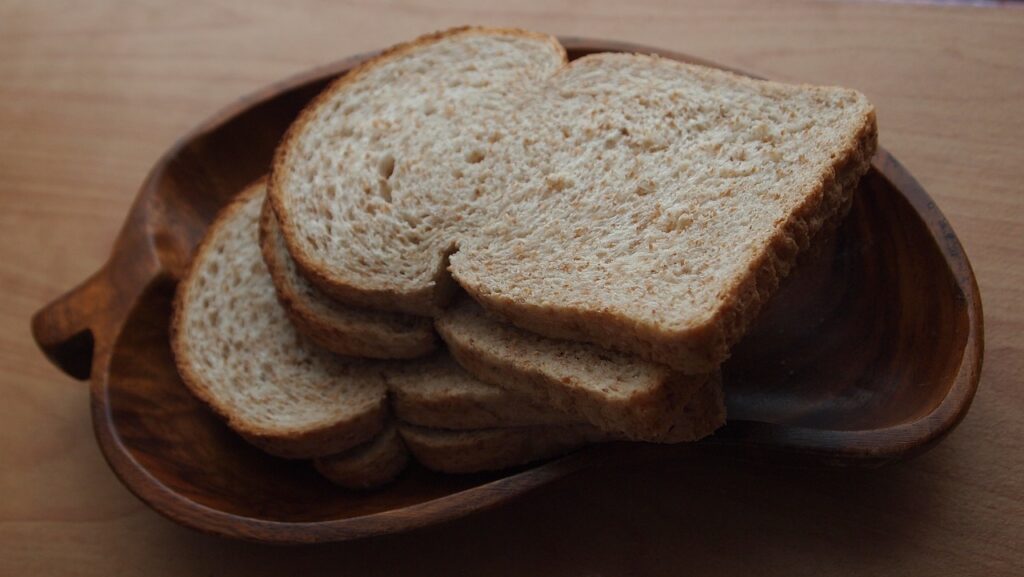The Ultimate Guide to Healthy Breads

Bread is often seen as a guilty pleasure in the world of fitness and health. However, it doesn’t have to be that way. In this guide we will do a deep dive into the different types of breads that are fitness friendly.
This guide aims to shed light on this staple, revealing that not all loaves are created equal.
Whether you’re looking to build muscle, lose weight, or simply maintain a healthy diet, this guide will empower you to make informed choices, ensuring that your love for bread can coexist with your commitment to health and wellness.
We will be looking at the following types of bread:
- Sprouted Breads
- Multigrain Breads
- Whole Wheat Breads
Sprouted Breads

Sprouted breads are made from whole grains that have been allowed to sprout or germinate before being milled into flour. This process can increase the nutritional value and digestibility of the grains. Unsprouted grains are what is used for most breads where they are grounded into flour before they sprout. When they sprout many nutritional benefits occur such as specific enzymes are activated to break down stored nutrients within the grain, vitamins, minerals, and antioxidants become more accessible, and the content of some nutrients, like vitamin C and B vitamins increases. Sprouted grains are usually whole grains that are soaked in water until they start to germinate.

Here are some common types of sprouted breads:
- Ezekiel Bread: Made from a mix of sprouted grains, such as wheat, barley, millet, spelt, and legumes like lentils and soybeans. It’s inspired by a biblical recipe.
- Sprouted Wheat Bread: Made from sprouted wheat grains. It’s often higher in fiber and nutrients compared to regular whole wheat bread.
- Sprouted Multigrain Bread: Made from a combination of various sprouted grains like wheat, barley, oats, and seeds. It offers a diverse range of flavors and nutrients.
- Sprouted Rye Bread: Made from sprouted rye grains, often resulting in a denser texture and a slightly tangy flavor.
- Sprouted Spelt Bread: Made from sprouted spelt grains, an ancient grain that’s easier to digest for some people than modern wheat.
- Sprouted Barley Bread: Made from sprouted barley grains, which can add a distinct flavor and chewy texture to the bread.
- Sprouted Gluten-Free Bread: Made from sprouted gluten-free grains like brown rice, quinoa, millet, and amaranth, catering to those with gluten sensitivities or celiac disease.
- Sprouted Sourdough Bread: Combines the benefits of sprouting with the fermentation process of sourdough, enhancing the flavor and digestibility.
Each type of sprouted bread has its unique taste and nutritional profile, making them a great choice for health-conscious men age 40 and over.
Here are some key benefits:
- Enhanced Nutrient Availability:
- Increased Vitamins and Minerals: Sprouting grains can increase the bioavailability of vitamins and minerals, such as B vitamins, vitamin C, folate, iron, magnesium, and zinc.
- More Antioxidants: The sprouting process can increase antioxidant levels, which help protect cells from damage.
- Increased Vitamins and Minerals: Sprouting grains can increase the bioavailability of vitamins and minerals, such as B vitamins, vitamin C, folate, iron, magnesium, and zinc.
- Improved Digestibility:
- Reduced Antinutrients: Sprouting reduces levels of antinutrients like phytic acid and enzyme inhibitors, which can interfere with the absorption of nutrients and digestion.
- Easier on the Digestive System: The process breaks down some of the starches in grains, making them easier to digest.
- Reduced Antinutrients: Sprouting reduces levels of antinutrients like phytic acid and enzyme inhibitors, which can interfere with the absorption of nutrients and digestion.
- Better Protein Quality:
- Complete Protein Source: Ezekiel bread, made from a combination of sprouted grains and legumes, contains all nine essential amino acids, making it a complete protein source.
- Higher Protein Content: Sprouted grains generally have a higher protein content than their non-sprouted counterparts.
- Complete Protein Source: Ezekiel bread, made from a combination of sprouted grains and legumes, contains all nine essential amino acids, making it a complete protein source.
- Lower Glycemic Index:
- Steadier Blood Sugar Levels: Sprouted breads typically have a lower glycemic index than regular whole grain breads, which means they cause a slower, more gradual rise in blood sugar levels. This is beneficial for maintaining steady energy levels and managing blood sugar, especially for people with diabetes.
- Steadier Blood Sugar Levels: Sprouted breads typically have a lower glycemic index than regular whole grain breads, which means they cause a slower, more gradual rise in blood sugar levels. This is beneficial for maintaining steady energy levels and managing blood sugar, especially for people with diabetes.
- Increased Fiber:
- Better Digestive Health: Sprouted grains can have higher fiber content, promoting better digestive health and helping to maintain regular bowel movements.
- Better Digestive Health: Sprouted grains can have higher fiber content, promoting better digestive health and helping to maintain regular bowel movements.
- Natural Ingredients:
- No Preservatives: Many sprouted breads, including Ezekiel bread, are made with minimal processing and do not contain added sugars, preservatives, or artificial ingredients.
- No Preservatives: Many sprouted breads, including Ezekiel bread, are made with minimal processing and do not contain added sugars, preservatives, or artificial ingredients.
- Improved Flavor and Texture:
- Nutty Flavor and Tender Texture: Sprouting grains can enhance the flavor and texture of the bread, giving it a nuttier taste and a softer, more tender texture compared to conventional whole grain breads.
Ezekiel bread, in particular, is made from a blend of sprouted grains and legumes such as wheat, barley, millet, lentils, soybeans, and spelt, which contributes to its unique nutritional profile and health benefits.
In summary, sprouted breads offer several nutritional and health benefits compared to traditional whole grain breads.
Considerations:
Shorter Shelf Life: Sprouted breads often have a shorter shelf life compared to regular bread. The higher moisture content in sprouted grains can lead to faster spoilage and mold growth.
Cost: Sprouted breads can be more expensive than conventional breads due to the additional processing and the quality of the ingredients used.
Texture and Taste: Some people might not enjoy the texture and taste of sprouted breads. They can be denser and have a more earthy flavor compared to traditional bread.
Availability: Sprouted breads may not be as widely available as regular bread, especially in areas without health food stores or specialty grocery stores.
Digestive Issues: While sprouted grains can be easier to digest for some people, they might still cause digestive issues for others, especially those with specific grain sensitivities or allergies.
Nutritional Content Variability: The nutritional content of sprouted breads can vary depending on the type of grain used and the length of the sprouting process. This variability might make it harder to consistently meet certain dietary needs.
Preparation and Cooking: Sprouted bread can sometimes be trickier to bake with if you’re making it at home. The dough can be stickier and more difficult to handle compared to dough made with unsprouted grains.
Multigrain Breads

Multigrain bread is a type of bread made from two or more types of grain. Unlike whole grain bread, which is made from the whole kernel of a single type of grain, multigrain bread combines different grains, which can include wheat, barley, millet, oats, and more. This combination can provide a range of textures and flavors, as well as nutritional benefits. The specific grains used can vary widely, but the goal is to combine the qualities of each grain to create a bread that is nutritious and flavorful. Keep in mind these grains might not be in their whole form; they could be refined.
Nutritional Benefits:
- Variety of Nutrients:
- Whole Grains: When the grains used are whole grains, they retain their bran, germ, and endosperm, offering more fiber, vitamins, and minerals compared to refined grains.
- Diverse Nutrients: Different grains provide different nutrients. For example, oats are rich in beta-glucan (a type of fiber), quinoa offers a good amount of protein and essential amino acids, and barley provides selenium and magnesium.
- Whole Grains: When the grains used are whole grains, they retain their bran, germ, and endosperm, offering more fiber, vitamins, and minerals compared to refined grains.
- Higher Fiber Content:
- Multigrain bread typically has a higher fiber content, which is beneficial for digestive health and can help in maintaining a healthy weight by promoting a feeling of fullness.
- Multigrain bread typically has a higher fiber content, which is beneficial for digestive health and can help in maintaining a healthy weight by promoting a feeling of fullness.
- Rich in Essential Vitamins and Minerals:
- Whole grains in multigrain bread are sources of important vitamins like B vitamins (thiamin, riboflavin, niacin, folate) and minerals such as iron, magnesium, and selenium.
Health Benefits:
- Improved Digestive Health:
- The high fiber content aids in digestion, prevents constipation, and promotes a healthy gut microbiome.
- The high fiber content aids in digestion, prevents constipation, and promotes a healthy gut microbiome.
- Heart Health:
- Diets high in whole grains are linked to a lower risk of heart disease. The fiber helps reduce cholesterol levels, and the antioxidants present in whole grains help reduce inflammation.
- Diets high in whole grains are linked to a lower risk of heart disease. The fiber helps reduce cholesterol levels, and the antioxidants present in whole grains help reduce inflammation.
- Blood Sugar Control:
- The fiber content helps slow down the absorption of sugars, leading to better blood sugar control. This is particularly beneficial for individuals with diabetes or those at risk of developing diabetes.
- The fiber content helps slow down the absorption of sugars, leading to better blood sugar control. This is particularly beneficial for individuals with diabetes or those at risk of developing diabetes.
- Weight Management:
- High-fiber foods like multigrain bread can help control appetite and prolong the feeling of fullness, which can assist in weight management.
- High-fiber foods like multigrain bread can help control appetite and prolong the feeling of fullness, which can assist in weight management.
- Reduced Risk of Chronic Diseases:
- Regular consumption of whole grains is associated with a reduced risk of various chronic diseases, including type 2 diabetes, certain cancers, and stroke.
- Regular consumption of whole grains is associated with a reduced risk of various chronic diseases, including type 2 diabetes, certain cancers, and stroke.
- Energy Levels:
- The complex carbohydrates in multigrain bread provide a steady source of energy, preventing the spikes and crashes associated with refined carbohydrates.
Considerations:
- Whole Grain Content: Ensure the multigrain bread is made with whole grains rather than refined grains to maximize the health benefits. Check the ingredient list for “whole” as the first ingredient.
- Added Sugars and Preservatives: Some commercial multigrain breads may contain added sugars and preservatives. It’s best to choose varieties with minimal additives.
- Gluten Sensitivity: Individuals with gluten sensitivity or celiac disease should choose gluten-free multigrain options.
- More Expensive: Multigrain breads can be more expensive than other types of bread due to the variety of grains used and the perception of them being healthier.
- Caloric Density: Multigrain bread can sometimes be denser and higher in calories than other bread types. This might not be ideal for those looking to manage their weight.
- Potential Allergens: Multigrain bread may contain a variety of grains and seeds, which could be problematic for people with specific allergies or intolerances (e.g., gluten, nuts, seeds).
- Misleading Labels: Labels like “multigrain” can be misleading. They may lead consumers to believe the product is healthier than it actually is, especially if the primary grains used are refined rather than whole.
- Taste and Texture: Some people might not prefer the taste and texture of multigrain bread, which can be denser and more coarse compared to white or other types of bread.
In summary, multigrain bread, particularly when made with whole grains, offers a variety of nutrients and health benefits, contributing positively to overall health and well-being.
Whole Wheat Breads

Whole wheat bread is a type of bread made using flour that is milled from whole wheat grains. Unlike white bread, which uses refined flour that has had the bran and germ removed, whole wheat bread retains all parts of the wheat kernel, including:
- Bran: The outer layer that is rich in fiber, vitamins, and minerals.
- Germ: The nutrient-rich core that contains vitamins, minerals, and healthy fats.
- Endosperm: The starchy middle layer that provides energy.
Because it includes all parts of the grain, whole wheat bread is more nutritious than bread made with refined flour. It has a denser texture and a nuttier flavor compared to white bread. Whole wheat bread is often considered a healthier option due to its higher content of fiber, vitamins, and minerals.
Nutritional Benefits:
Whole wheat bread offers several health benefits compared to bread made with refined flour. Here are some of the key advantages:
- Higher Nutritional Value: Whole wheat bread contains more nutrients than white bread, including vitamins B6 and E, magnesium, zinc, folic acid, and chromium. These nutrients support various body functions, from metabolism to immune response.
- Rich in Fiber: Whole wheat bread is high in dietary fiber, which is essential for healthy digestion. Fiber helps maintain bowel regularity, prevent constipation, and may reduce the risk of developing digestive conditions like diverticulitis.
- Lower Risk of Chronic Diseases: Consuming whole grains, such as those found in whole wheat bread, is associated with a reduced risk of chronic diseases like heart disease, type 2 diabetes, and certain cancers. The fiber, antioxidants, and phytochemicals in whole grains contribute to these protective effects.
- Weight Management: The high fiber content in whole wheat bread can help with weight management.
Considerations:
- Denser Texture: Whole wheat bread tends to be denser and heavier than white bread, which some people might find less appealing in terms of taste and texture.
- Higher Calorie Content: Whole wheat bread can be slightly higher in calories compared to white bread due to its denser nature. This could be a consideration for those closely monitoring their caloric intake.
- Digestive Issues: The higher fiber content, while beneficial for many, can cause digestive issues like bloating, gas, or stomach cramps for individuals not accustomed to high-fiber diets or those with certain gastrointestinal conditions.
- Shorter Shelf Life: Whole wheat bread may spoil more quickly than white bread due to the presence of oils in the wheat germ, which can go rancid.
- Potential Allergies and Sensitivities: People with wheat allergies or gluten sensitivities need to avoid whole wheat bread. It contains gluten, which can be problematic for those with celiac disease or non-celiac gluten sensitivity.
- Taste Preference: Some people may simply prefer the taste of white bread over whole wheat bread, which can influence their dietary choices.
Despite these potential drawbacks, for many people, the benefits of whole wheat bread outweigh the disadvantages, making it a healthy addition to a balanced diet.
Overall, sprouted breads are the best option for those seeking optimal nutritional value and a commitment to a fitness lifestyle. They have a lower glycemic index compared to regular breads, helping to maintain stable blood sugar levels. For men age 40 and over focused on maintaining a balanced diet and supporting their fitness goals, sprouted breads provide a superior choice.
Disclaimer: Always consult your doctor before trying anything mentioned in this article. All information in this email is intended for educational use only and is not a substitute for professional medical advice, diagnosis, or treatment. Fit Dads Over 40 is not responsible for the accuracy, completeness, suitability, or validity of any information in this article. Some of the links on this site are affiliate links. This means that, at zero cost to you, we will earn an affiliate commission if you click through the link and finalize a purchase.


